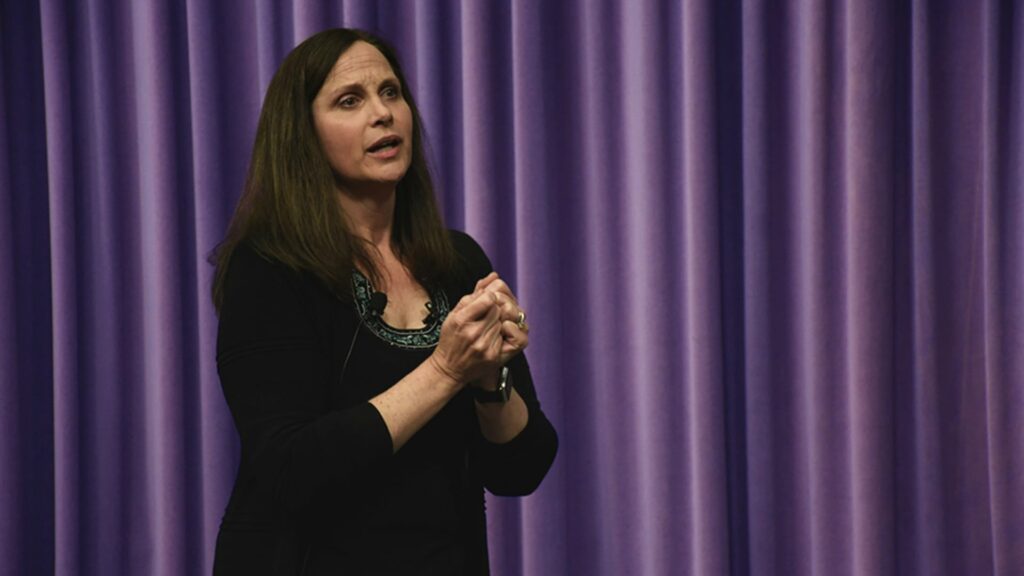
For most of us, the reorganization of Google into a network of separate subsidiaries under the holding company Alphabet had zero effect on our lives. In the wake of Larry Page’s announcement in August 2015, we searched the web, mapped our routes, checked our Gmail, and it all felt exactly the same.
That’s because those core products remained within the original blockbuster business, now known to investors as Google, Inc. But over the long run, the restructuring could unleash the full ambition and creativity of the Silicon Valley company — influencing our lives dramatically in the way that it has with search, and could with self-driving cars and the rest.
That’s Kathleen Eisenhardt’s take on it. She is the S.W. Ascherman M.D. Professor in Management Science and Engineering at Stanford University, and a leading scholar on strategy and organization — especially in technology-based companies and high-velocity industries.
Beyond that, Eisenhardt was the Ph.D. advisor for Shona Brown, the former senior vice president of business operations at Google. Together, they wrote the highly acclaimed business book Competing on the Edge: Strategy as Structured Chaos.
In advance of next month’s annual stockholders meeting at the Googleplex, the first in the age of Alphabet, and Page’s promise of increased transparency into finances and operations, Eisenhardt explains how tech companies (and even terrorists) have turned to an agile and modular structure — and what needs to happen to fuel outsized innovation beyond just another corporate re-org.
Stanford eCorner: Alphabet CEO Larry Page says this will allow for cleaner operations, while industry observers say it will soothe shareholder concerns about Google’s increasingly “wild investments.” What do you find most interesting about the restructuring?
Kathleen Eisenhardt: The most interesting aspect of the Google restructuring is that it took so long to do it. Google has an amazing search business — no doubt about it. Many people even call it Google’s “ATM” because it generates so much cash. But at the same time, Google has had a rough time developing successful new businesses. Many (or even all) of Google’s winning innovations and businesses outside of search per se — like YouTube, Google Earth, Nest and so on — came from acquisitions. Even DoubleClick that was pivotal to the search business was an acquisition.
So, like other companies with enormously successful core businesses (like Intel and Microsoft), Google’s management has found replicating its search success difficult to do organically — that is, from inside Google itself and without the boost of acquisitions. In my mind, reorganizing was long overdue.
eCorner: In Competing on the Edge, you and Shona Brown aimed to help organizations find the balance between too much and too little structure. How did this restructuring size up with the concepts from that book?
Eisenhardt: Shona and I wrote about too much and too little organizational structure – and several processes, one of which we called “patching.” Patching simply means frequently reorganizing companies into focused business units that match changing markets. The term patching comes from quilting: the size of the cloth “patches” on a quilt.
A major insight of patching is the critical importance of business size — organizing into a few large businesses favors efficiency and fits in stable markets. In contrast, organizing into lots of small businesses favors agility and goes with changing markets. This size tradeoff is another instance of balance between too much and too little structure. In the case of Google, it’s likely that its management stayed too long in an organization that favored efficiency when agility was the better choice.
Another point of patching is the importance of having businesses that are about the same size. This reduces politics — a huge benefit. But, it will be challenging for Google to achieve the same size across its business, and so keep the search business from suffocating the others. At the same time, Larry Page is right: The new organization will make for a cleaner organization. The “sunshine” of this new organization should be immensely helpful in the C-suite for clarifying the actual performance of different businesses, and assessing whether the right managers are in place.
eCorner: Do you think the separation of Google into subsidiaries — web-based businesses, medicine, investing and assorted technologies (Nest, X, Sidewalk Labs) — will increase the pace of innovation and bring more breakthroughs into the world?
Eisenhardt: Yes, I absolutely think that the separation will turbo-charge innovation. Of course, this somewhat depends on the investment level. But generally speaking, if implemented well, the new organization lets Google’s leaders install top-notch management teams for each business and gives those teams the freedom to run their businesses. The key will be to push decision-making (both tactical and strategic) down to the business level — to those managers in the best position, with the most relevant skills and information — to make quick and informed choices. They are the ones, after all, with the pulse of the market.
There’s another subtler point, too — that is, one of the toughest challenges is to manage businesses that are operating at different speeds, like simultaneously managing some that are moving at Internet time and others that are running at a slower pace for now (like autonomous vehicles). It is difficult to manage to the beat of different market metronomes. So the new structure should help Google managers to stay in rhythm with their markets.
eCorner: You’ve also recently looked at the virtues of simplicity. And if anything, “Google” was the essence of simplicity in corporate identity. Doesn’t the corporation lose something in this restructuring that adds complexity (at least internally)?
Eisenhardt: Google’s identity may have been simple, but its structure was not. The new business-unit organization should be a lot simpler for people inside and outside of the corporation. In fact, this restructuring is an old story.
A classic book in business history is Strategy and Structure, by Alfred Chandler. He studied several corporations from the beginning of the 20th century, including and notably DuPont. DuPont was primarily an explosives manufacturer that emerged from World War I with huge stockpile of cash. DuPont executives used that cash to diversify into a slew of new businesses, but they stayed in the same monolithic structure that had brought success during the War. By the early 1920s, DuPont was losing money in almost every business except explosives. The flood of red ink finally led DuPont’s senior executives to reorganize the corporation into small business units focused on particular products. DuPont and other corporations that followed this same path went on to become the backbone of U.S. industry. They diversified, stagnated and then reorganized, just as Google has done.
Today, companies like Johnson & Johnson, General Electric and 3M have prospered for decades using this same business-unit structure. Even terrorist groups like ISIS successfully use it, unfortunately. In fact, one of Silicon Valley’s most iconic firms, Hewlett-Packard, remained at the top of the tech world for over 30 years. By contrast, Apple and Google are still a long way from this kind of staying power. A major reason for H-P’s success was its very modular business-unit structure. Regrettably, H-P faltered when its corporate executives added complexity and slipped out of this structure.
So yes, Google’s switch to their new structure is an old story and an overdue one. The new “simpler” Google will be a better Google.







